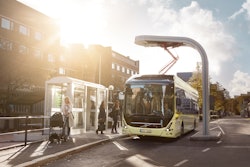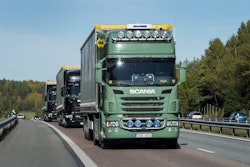Siemens, as a member of the Tampa-Hillsborough Expressway Authority (THEA) team, has been chosen by the U.S. Department of Transportation (USDOT) to provide innovative vehicle-to-infrastructure (V2I) technology for a new Connected Vehicle pilot project. Siemens V2I technology will enable vehicles and pedestrians to communicate with traffic infrastructure like intersections and traffic lights in real-time to reduce congestion specifically during peak rush hour in downtown Tampa. The technology will also significantly help improve safety and reduce greenhouse gas emissions. This is one of three projects funded by the USDOT to pilot next-generation technology in infrastructure and vehicles that can impact unimpaired vehicle crashes, which make up 80% of the crashes on the road.
Siemens is working in partnership with THEA to identify how to implement CV technologies including:
- Intelligent traffic signal systems to coordinate signals and pedestrian crossings that respond immediately to traffic conditions in real-time and provide signal priority
- Curve speed warnings to alert drivers if they are approaching a curve at a speed that may be too high for safe travel
- Transit bus operator alerts when pedestrians may be in a crosswalk or when vehicles attempt to go around a bus in order to avoid potential conflicts
- Automated calls or audio cues for impaired pedestrians to safely navigate crosswalks
- Intersection Movement Assistance that warns drivers when it is unsafe to enter an intersection, for example when something may be blocking the driver’s view of opposing of crossing traffic, and forward collision warnings for hard braking in the traffic stream
- Probe-enabled traffic monitoring to transmit real-time traffic data between vehicles
“In our opinion, Siemens' presence on our team and the commitment they showed to the Tampa project while helping to prepare the proposal was instrumental to THEA being selected,” says Joe Waggoner, Executive Director of THEA. “We look forward to working with Siemens throughout this deployment and relying on their expertise introducing these technologies to real-world situations.”
The Connected Vehicle systems are able to communicate with both new and older vehicles through new in-vehicle technology, an on-board unit such as a satellite radio, or a smart phone application. This project will help the USDOT develop the technology, data and baselines to be fully compatible with crash avoidance systems of new cars beginning in the 2017 model year.
“Siemens has been developing and testing advanced Connected Vehicle technology for years so we are very excited to partner with THEA and the USDOT to introduce these systems into real-world traffic environments,” says Marcus Welz, CEO of Siemens Intelligent Traffic Systems. “This innovative project will prove the efficiency, safety and environmental benefits of Connected Vehicles and will be an important step in bringing these intelligent technologies to cities and communities across the U.S.”
Siemens, a leader in Connected Vehicle and intelligent transportation technologies, has worked with cities including Ann Arbor to design and test these systems. In 2012, Siemens specialized traffic controllers were included as part of the U.S. Department of Transportation Ann Arbor Test Bed for Connected Vehicles. The specialized controllers transmit critical information to the ‘connected vehicles’ so they can make decisions in real-time to avoid crashes. Siemens is also a member of the USDOT Affiliated Test Bed for Connected Vehicle technologies, a group pursuing wide-spread deployment of wireless communication systems between vehicles and road infrastructure.
The $42 million USDOT Connected Vehicle program includes pilots in New York, Tampa and Wyoming to accelerate deployment of the technologies in more regions across the country. The THEA pilot project, currently in its first phase, will be implemented across the next 18 months, followed by a 3-year study period to gather data and determine outcomes.


















